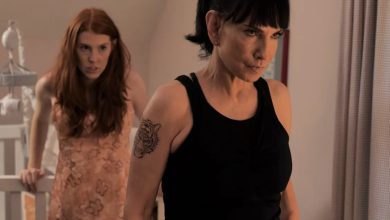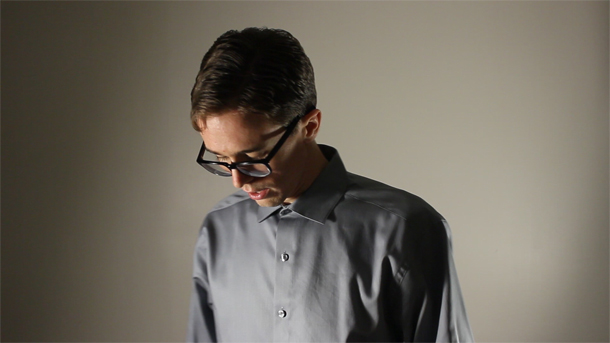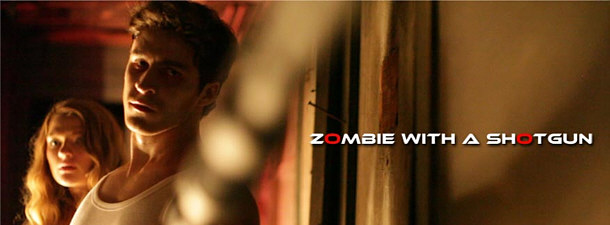‘Diane’: Interview with writer and director Michael Mongillo

“Diane” is a new horror-thriller movie from Random Media that follows the story of a wounded Afghanistan war veteran who stumbles upon a beautiful corpse that becomes an obsession after he took a photo of her. Subsequently harassed by her widow, the police, and neighbors, Steve’s life is turned upside down by the dead woman.
The movie had been premiered in North America and Europe to rave reviews and has won a number of awards. Recently writer and director Michael Mongillo discussed the movie, it’s successes, and his plans for the future.
Meagan Meehan (Q) of Movie Vine: How did you get into movies and how did that lead to directing and writing?
 Michael Mongillo (MM): I got into movies very young, watching sci-fi and westerns at my grandparents’ house in the ’70s. My parents had that typical hippie attitude about TV rotting your brain so even though we had one in our home I was rarely allowed to turn it on. I was dumped at my grandparents’ most weekends and they were happy to let me do pretty much whatever. If I wasn’t biking around town or playing outside with the other kids, I was watching movies, which was at least fifty-percent of the time. My grandfather had installed a big, rotating antenna on top of the house so we could consistently tune-in channel 11 and channel 5 from New York and even 38 out of Boston; it was like cable before cable because those independent stations showed amazing content that the Connecticut affiliates wouldn’t. In my memory, there was always some kind of afternoon movie marathon that ran straight into the night. So, it was a steady diet of Planet of the Apes, Godzilla movies, spaghetti westerns, the occasional classic. I was obsessed, especially with sci-fi. This was both before and after seeing “Star Wars” in the summer of 1977; like a lot of filmmakers my age, that’s what really got me into writing stories, drawing comics, and making attempts at shorts on Super 8. Around the same time, my grandfather started dropping me off downtown for Saturday afternoon double-features at the long-gone Southington Showcase: mostly very adult but apparently G-rated, low-budget UFO and mysticism flicks, Sunn Classic Pictures, or bizarre, live-action Disney. That’s when I started to do more than just daydream about becoming a filmmaker. I thought, I can definitely make a better movie than these hacks. But with no money to get deeper into the technical side of filmmaking and with no one to provide any real guidance, I mostly concentrated on illustration as a creative outlet. I stayed passionate about movies, going to this theater or that at least once a week, but it wasn’t until I was a teenager in the ’80s that my friends and I started messing around with our parent’s camcorders. That led to homemade VHS-to-VHS linear editing setups and pretty soon it was one of our main pastimes. If we weren’t playing Prog Rock or Metal in our various, competitive band situations, we were making movies. It was a film studies class in high school where I got my first taste of real film theory and critical analysis. We watched so many great films that are still among my very favorites like, “Cool Hand Luke,” “Badlands,” and “Network.” For the final, you could write an essay or make a short. At the time, a short was not something most students would attempt. We made this twenty-minute anthology, everything from experimental to horror, but mostly it was intentionally juvenile and silly shorts. It was called, “Those Guys: The Movie.” It became a comedy smash at Platt High and our popularity soared for a bit. I started to think about filmmaking as a career again but it wasn’t until I transferred from Boston University to the Hartford Art School that I committed, when I switched from a graphic design major to a film/video major. I’ve been doing it ever since.
Michael Mongillo (MM): I got into movies very young, watching sci-fi and westerns at my grandparents’ house in the ’70s. My parents had that typical hippie attitude about TV rotting your brain so even though we had one in our home I was rarely allowed to turn it on. I was dumped at my grandparents’ most weekends and they were happy to let me do pretty much whatever. If I wasn’t biking around town or playing outside with the other kids, I was watching movies, which was at least fifty-percent of the time. My grandfather had installed a big, rotating antenna on top of the house so we could consistently tune-in channel 11 and channel 5 from New York and even 38 out of Boston; it was like cable before cable because those independent stations showed amazing content that the Connecticut affiliates wouldn’t. In my memory, there was always some kind of afternoon movie marathon that ran straight into the night. So, it was a steady diet of Planet of the Apes, Godzilla movies, spaghetti westerns, the occasional classic. I was obsessed, especially with sci-fi. This was both before and after seeing “Star Wars” in the summer of 1977; like a lot of filmmakers my age, that’s what really got me into writing stories, drawing comics, and making attempts at shorts on Super 8. Around the same time, my grandfather started dropping me off downtown for Saturday afternoon double-features at the long-gone Southington Showcase: mostly very adult but apparently G-rated, low-budget UFO and mysticism flicks, Sunn Classic Pictures, or bizarre, live-action Disney. That’s when I started to do more than just daydream about becoming a filmmaker. I thought, I can definitely make a better movie than these hacks. But with no money to get deeper into the technical side of filmmaking and with no one to provide any real guidance, I mostly concentrated on illustration as a creative outlet. I stayed passionate about movies, going to this theater or that at least once a week, but it wasn’t until I was a teenager in the ’80s that my friends and I started messing around with our parent’s camcorders. That led to homemade VHS-to-VHS linear editing setups and pretty soon it was one of our main pastimes. If we weren’t playing Prog Rock or Metal in our various, competitive band situations, we were making movies. It was a film studies class in high school where I got my first taste of real film theory and critical analysis. We watched so many great films that are still among my very favorites like, “Cool Hand Luke,” “Badlands,” and “Network.” For the final, you could write an essay or make a short. At the time, a short was not something most students would attempt. We made this twenty-minute anthology, everything from experimental to horror, but mostly it was intentionally juvenile and silly shorts. It was called, “Those Guys: The Movie.” It became a comedy smash at Platt High and our popularity soared for a bit. I started to think about filmmaking as a career again but it wasn’t until I transferred from Boston University to the Hartford Art School that I committed, when I switched from a graphic design major to a film/video major. I’ve been doing it ever since.
Q: How did you get the idea for “Diane”?
MM: I didn’t have any screenplays on the shelf that could be done ultra-low-budget so I started looking at InkTip and came across a great screenplay titled, “Death Special,” by Matt Giannini. Its core concept, a loner finding the dead body of a young woman in his backyard, was presented as a very intriguing setup, but then the story veered into Cronenberg body horror and then necrophilia. It was very well done and succeeded as strange eroticism but it wasn’t the movie I wanted to make. I got in touch with Matt and he was open to me adapting it; the result is “Diane.”
Q: How would you describe the film’s mood and tone and how have audiences responded to the morbid subject matter?
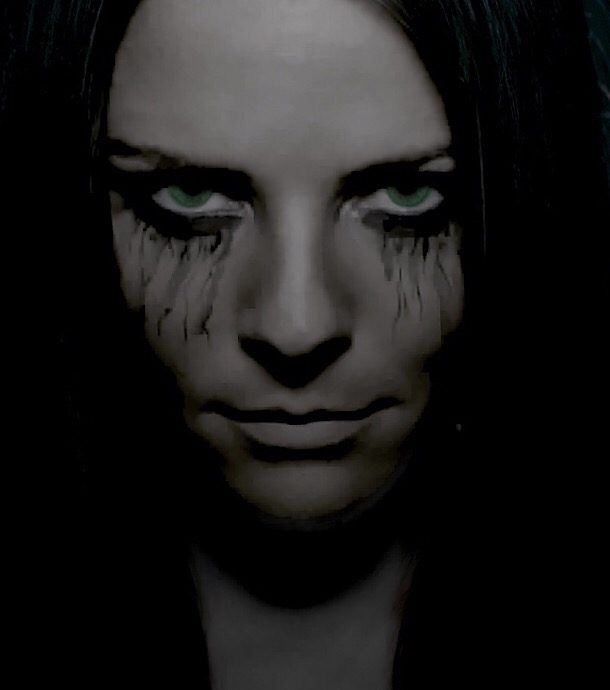 MM: The tone of the film is inarguably dark and eerie. I tried to strike a balance with some humor and absurd moments: not quite “reality” in spots even though I was after an overall feel of authenticity. But it is such a sad story that I felt it could use a little absurdity to keep it from being completely bleak. My wildly talented score composer, Austin Wintory, who was onboard since pre-production, landed on the word, “weird,” which continued to be his assessment even after he started scoring to picture. In the EC Comics sense, it is definitely a weird tale; still, audience response in London and New York was overwhelmingly positive. Now that it’s being released by Random Media, I’m predicting it will be unfairly criticized by genre fans expecting a terrifying horror movie or it will be too weird for those wanting a straightforward drama. Its stars, Jason Alan Smith and Carlee Avers, are amazing, such honest, unselfconscious portrayals of these broken people, so maybe I’m worrying for nothing and that’s what will resonate with a wider audience.
MM: The tone of the film is inarguably dark and eerie. I tried to strike a balance with some humor and absurd moments: not quite “reality” in spots even though I was after an overall feel of authenticity. But it is such a sad story that I felt it could use a little absurdity to keep it from being completely bleak. My wildly talented score composer, Austin Wintory, who was onboard since pre-production, landed on the word, “weird,” which continued to be his assessment even after he started scoring to picture. In the EC Comics sense, it is definitely a weird tale; still, audience response in London and New York was overwhelmingly positive. Now that it’s being released by Random Media, I’m predicting it will be unfairly criticized by genre fans expecting a terrifying horror movie or it will be too weird for those wanting a straightforward drama. Its stars, Jason Alan Smith and Carlee Avers, are amazing, such honest, unselfconscious portrayals of these broken people, so maybe I’m worrying for nothing and that’s what will resonate with a wider audience.
Q: What is your favorite scene in the movie and why are you so fond of that particular scene?
MM: The last scene in the movie is my favorite. Without giving away plot, it’s Steve’s tiny smile as he’s waiting there. Like most ghost stories, “Diane” is a story of redemption, so it was very important to me to give it my version of a happy ending. As bleak as the movie is, that smile tells us, despite everything that has happened, despite whatever’s next for Steve, he has purged himself of his ghosts. I wanted a cathartic moment, however understated, to be the final punctuation mark on the film. I’m particularly fond of that scene because Jason Alan Smith kept resisting giving me that smile, as scripted, even though he knew what I wanted and why. He just didn’t buy it so I had to convince him. I asked him to trust that I needed a “movie moment” as much as I needed believable human behavior; that a smile would not be false, especially where Steve is, in story, at that moment. By all accounts his life is destroyed, and he knows this, and accepting this leads to a bittersweet epiphany, the conscious thought that he can now leave all of his pain behind and whatever happens next will be for the better. We did at least ten takes of that final shot and the only one that was perfect, from the lighting gags, to the focus, to the blocking, to that final freeze-frame, was the take after Jason and I had that talk. Sometimes it just comes together.
 Q: How much research did you have to do on things like PTSD?
Q: How much research did you have to do on things like PTSD?
MM: A lot. I felt the need to confirm that the legal, police procedures, and PTSD elements of the story would work for those in-the-know. Online research, a few books from my library, and several documentaries were a good foundation and then the completed script was read by various experts, who I also interviewed, including a wartime vet and two police chiefs. Arguably, I took a few liberties on some of the psychological, but the funny thing is, I’m challenged most by the legal outcome of the story, which is confirmed factual. But the legal outcome is not a Hollywood conclusion, not the outcome viewer’s might prefer, so, ironically, some people have a hard time with it.
Q: How did you find locations to film and have you any fun behind-the-scenes-type stories?
MM: I wrote the movie with actual locations in mind and was able to procure all but one or two through friends, family, and various contacts. The main location, Steve’s house, is one of my dear friend’s homes. He’s a bit of a hoarder and I was direct with him, about that being my reason for wanting to shoot there (as a metaphor for Steve’s cluttered mind) and he was brave enough to allow it. It’s funny that it’s actually a bit underwhelming on-camera. That place is packed floor-to-ceiling and sometimes that doesn’t quite read in “Diane.”
Q: What other movies are you working on at the moment?
MM: I’m working on a serial killer movie, “Meanest Man in the World.” I’ve had this one in development since before we moved on to “Diane.” It’s my original script. Everyone who reads the screenplay loses their mind for it; yet, we still haven’t been able to put together complete financing to do it the way I want. We’ve got two-hundred-thousand raised but, even with that, we haven’t been able to raise the rest. I want at least five-hundred thousand; with that budget, we can make it look and feel like a three-million-dollar picture and get a name we’d actually like to work with, keep it bankable. What I really need is a successful producer to adopt me and my team. Know anyone? I’ve been asked by Random Media not to reveal how little it cost us to make “Diane” and, to be fair, no one is really impressed by that “Rebel Without a Crew” thing anymore. So, low-budget virtuosity aside, we’ve proven four times now that the content Mean Time Productions creates is entertaining and original. Now all we need is for someone to see “Diane” who is ready to invest in something new.
Q: What are your biggest hopes for the future of your directorial and screenwriting career and is anything else that you would like to add?
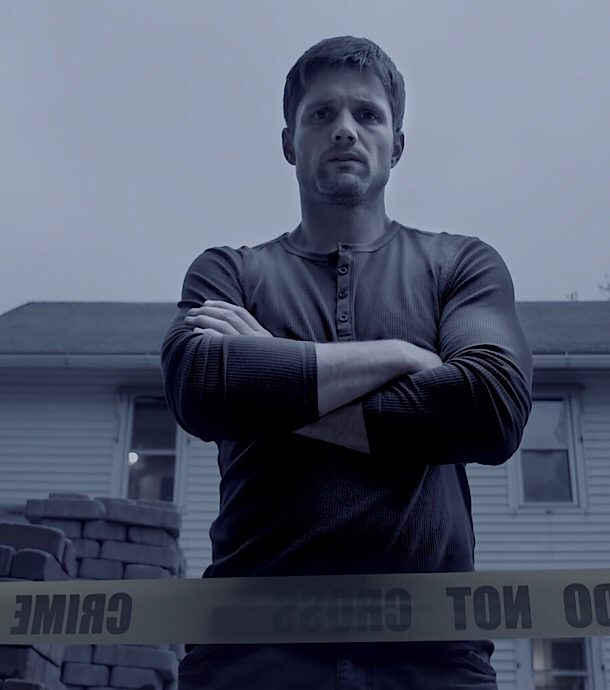 MM: My biggest hope for my directing and screenwriting career is modest. All I want is, occasionally, to get to make the films I want to make while earning enough for me, my partners, and my investors to do nothing else. The freedom to choose. For a few years surrounding “Being Michael Madsen,” I managed to achieve this for myself. Then the financial crisis of 2007-2008 came along and that momentum stalled. Back to work. I remember reading an interview withThurston Moore of Sonic Youth back in the ’90s, where the interviewer intimated that Moore should somehow resent Nirvana’s success, how he made the introductions that led to Nirvana being “discovered,” but that Sonic Youth would never achieve the same level of financial success. I wish I could remember Moore’s exact response since I paraphrase this story often enough. It was basically: I do whatever I feel like doing every day and the days I work I’m working on my art. Some months, I make five-hundred-dollars, some months I make ten-thousand, but I live my life in a way that allows me to do only what I love. That’s all I’m after. That and a hit film.
MM: My biggest hope for my directing and screenwriting career is modest. All I want is, occasionally, to get to make the films I want to make while earning enough for me, my partners, and my investors to do nothing else. The freedom to choose. For a few years surrounding “Being Michael Madsen,” I managed to achieve this for myself. Then the financial crisis of 2007-2008 came along and that momentum stalled. Back to work. I remember reading an interview withThurston Moore of Sonic Youth back in the ’90s, where the interviewer intimated that Moore should somehow resent Nirvana’s success, how he made the introductions that led to Nirvana being “discovered,” but that Sonic Youth would never achieve the same level of financial success. I wish I could remember Moore’s exact response since I paraphrase this story often enough. It was basically: I do whatever I feel like doing every day and the days I work I’m working on my art. Some months, I make five-hundred-dollars, some months I make ten-thousand, but I live my life in a way that allows me to do only what I love. That’s all I’m after. That and a hit film.
* * * * *
To learn more visit his official IMDB.
